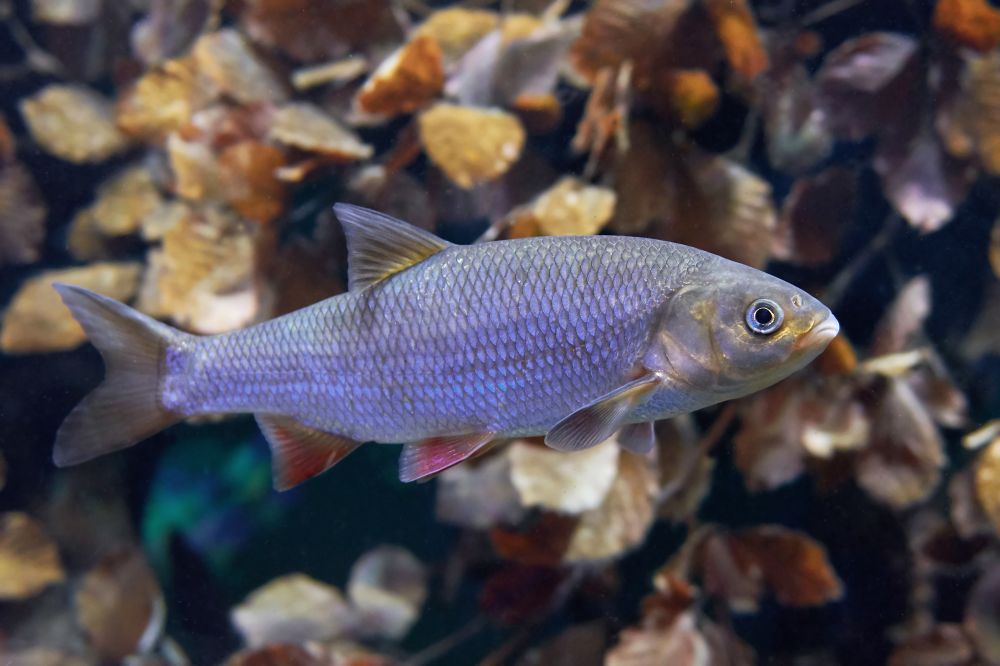
Read the article with FishingTheSpot: the ide fish
Keep an eye on this subject!
Thousands of species spotlights and techniques but also all the local information about your city!



Meet other anglers near you and share your fishing fishing trips, afoot or on a boat, at sea or in freshwater
See the fishing tripsThe Ide fish

June to March
25 cm
Did you fish
this species this month?
The Ide fish belongs to the Cyprinidae family. Its size is generally between 30 and 50 cm but this fish can reach a maximum length of 80 cm for a weight of 5 kg and an age of nearly 20 years. Spawning takes place from March to April. Females lay between 60,000 and 160,000 eggs. The fishery is open from June to March.
The body is long and laterally compressed with a terminal mouth pointing upwards. The head is strong with a small mouth, obtuse snout and yellow eyes. The back is rounded. The anal fin has a concave rear edge. The back and upper part of the head are greyish-green to brown; the yellowish-brown flanks have silvery or golden reflections; the belly is whitish. The fins are dark except for the pelvic, ventral and anal fins which are frankly red. In older and larger specimens, the body color may turn yellow/bronze.
The Ide fish lifestyle
Young specimen eat mainly plants. Adults feed on insects, mollusks and crustaceans. Larger individuals can put small fish (roaches and bleak fish) on their menu. In fresh water, food is mainly composed of insects, while in brackish water, the prey is more likely to be shellfish.
Spawning takes place from March to April (in water temperatures between 4 and 15°C, preferably above 12-13°C). The ide fish migrates to shallow waters. Males arrive a few days before females on the spawning grounds. Egg laying lasts about three days. Females lay 60,000 to 160,000 eggs, about 2.5 mm in diameter, that adhere to stones, pieces of wood or plants. Hatching occurs after about 2 to 3 weeks. The larvae, about 10 mm in size, live in calm waters and feed on zooplankton. Juveniles reach about 13 cm after one year, 18 cm after two years. Sexual maturity is reached between two and five years at a weight of about 400 g.
The Ide fish habitat
The ide fish lives in the calm waters of the middle and lower reaches of rivers (bream zone) as well as the large plain lakes and even small high-altitude lakes. It also frequents the brackish waters of estuaries and is found in the Baltic Sea. It has a great capacity to adapt to different habitats and is quite opportunistic. They live near the surface, usually in the middle of the water body, but young people come to feed as close to the shore as they do. He likes to stand under the overhangs to hunt for flying insects. It usually lives in a bench.
The ide fish is present in Central Europe, from the Rhine to the Urals and Scandinavia as well as in Great Britain.
The Ide fish angling
Recommended fishing techniques: blow fishing (telescopic or disassembled rod), English fishing (stick-float), feeder fishing. It enjoys maggots, mud worms, earthworms and most plant bait.


